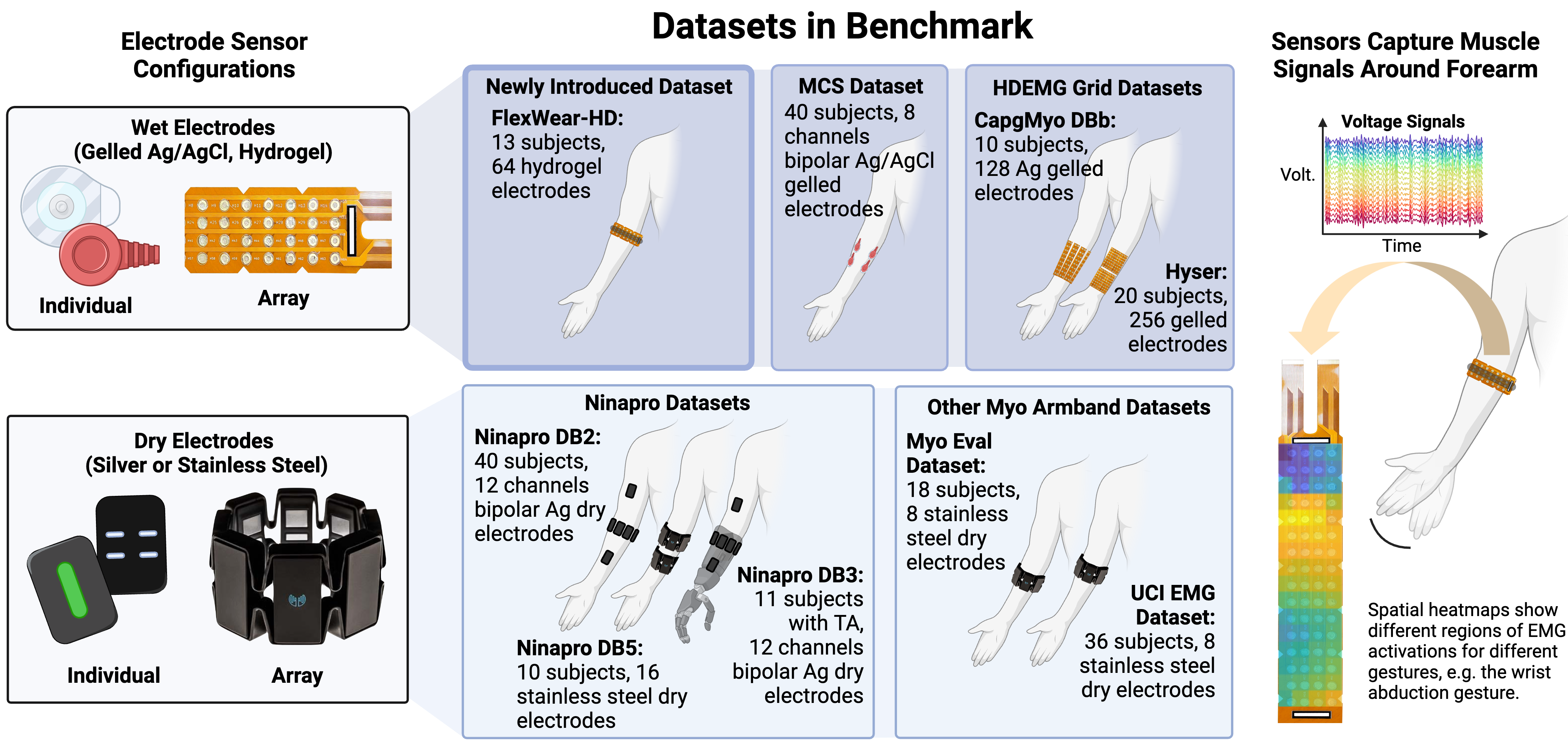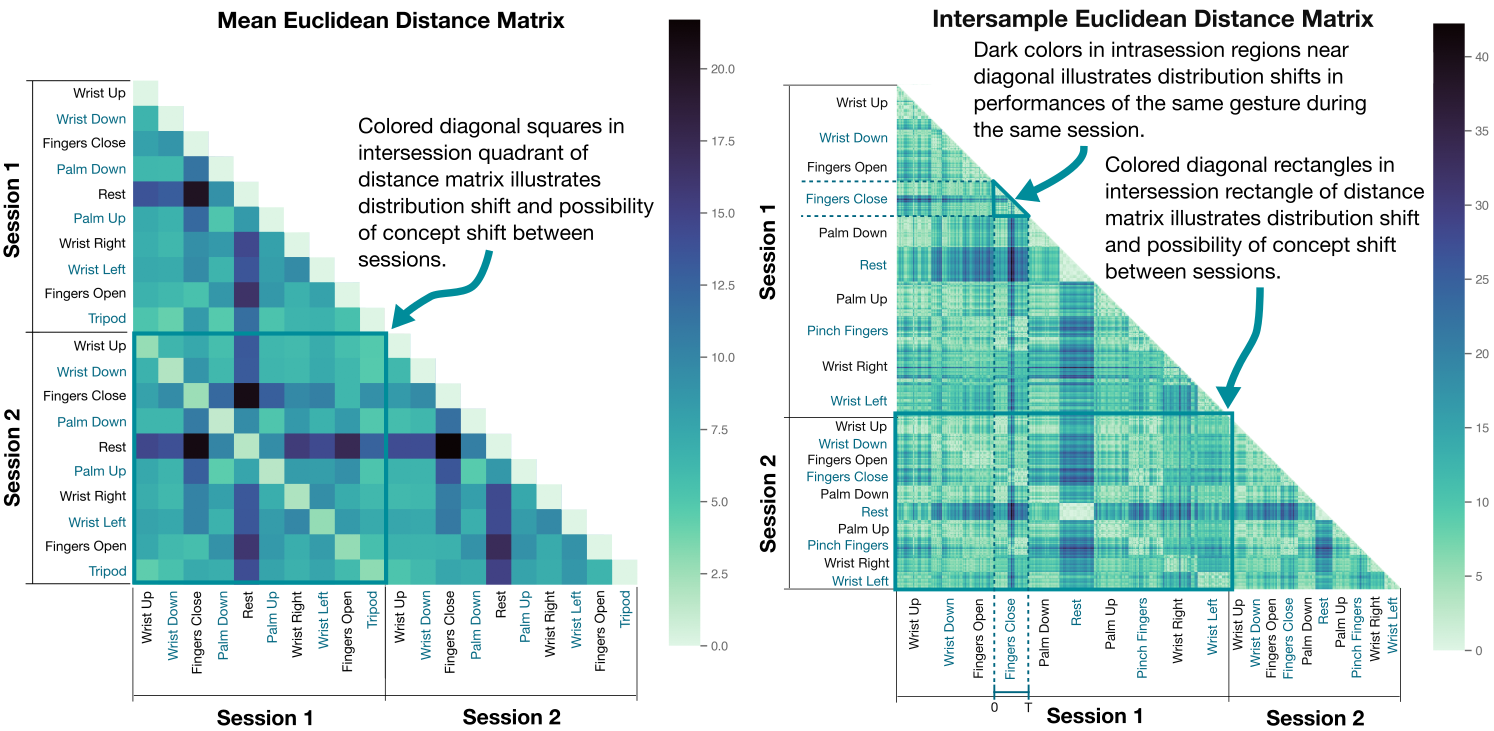 EMGBench: Benchmarking Out-of-Distribution Generalization and Adaptation for Electromyography
EMGBench: Benchmarking Out-of-Distribution Generalization and Adaptation for Electromyography

This paper introduces the first generalization and adaptation benchmark using machine learning for evaluating out-of-distribution performance of electromyography (EMG) classification algorithms. The ability of an EMG classifier to handle inputs drawn from a different distribution than the training distribution is critical for real-world deployment as a control interface. By predicting the user’s intended gesture using EMG signals, we can create a wearable solution to control assistive technologies, such as computers, prosthetics, and mobile manipulator robots. This new out-of-distribution benchmark consists of two major tasks that have utility for building robust and adaptable control interfaces: 1) intersubject classification, and 2) adaptation using train-test splits for time-series. This benchmark spans nine datasets, the largest collection of EMG datasets in a benchmark. Among these, a new dataset is introduced, featuring a novel, easy-to-wear high-density EMG wearable for data collection. The lack of open-source benchmarks has made comparing accuracy results between papers challenging for the EMG research community. This new benchmark provides researchers with a valuable resource for analyzing practical measures of out-of-distribution performance for EMG datasets. Our code and data from our new dataset can be found at emgbench.github.io.


@misc{yang2024emgbenchbenchmarkingoutofdistributiongeneralization,
title={EMGBench: Benchmarking Out-of-Distribution Generalization and Adaptation for Electromyography},
author={Jehan Yang and Maxwell Soh and Vivianna Lieu and Douglas J Weber and Zackory Erickson},
year={2024},
eprint={2410.23625},
archivePrefix={arXiv},
primaryClass={cs.LG},
url={https://arxiv.org/abs/2410.23625},
}